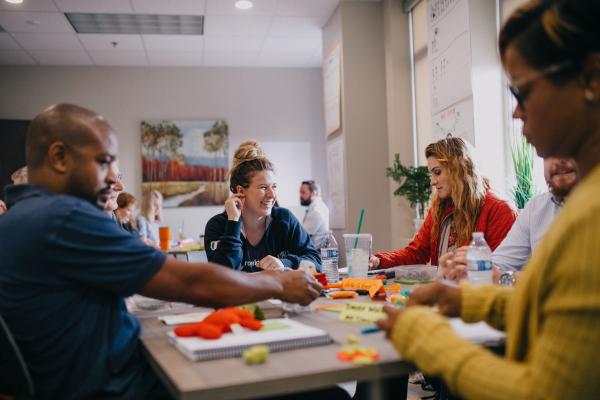Big Agile is your partner in navigating the path to adaptability and transformation. While the journey to agility often includes core elements, every organization is unique and requires a tailored approach to achieve its goals effectively. Here's how we approach this transition:
Foundational Understanding: Ensure everyone involved in the change effort is familiar with the core principles of adaptability, rooted in the Agile Manifesto and its values. This is about being agile, not just doing agile. Establishing the right mindset is the foundation upon which frameworks like Scrum and Kanban can thrive.
Collaboration at the Core: Success relies on strong collaboration between teams and stakeholders. We foster an environment where open communication flourishes, encouraging employees to share ideas freely. No individual is smarter than the collective power of the team.
Commitment to Continuous Learning: Promote a culture of ongoing improvement where processes are regularly reviewed and refined. This iterative and incremental approach drives growth and efficiency over time.
Delivering Value, Not Just Output: Shift the focus from merely delivering outputs to providing meaningful value to customers. Prioritize delivering small, usable increments of functionality frequently, ensuring clients see the benefits sooner.
Cultivating an Experimentation Mindset: Encourage teams to experiment with different practices to find what works best for their unique needs. Agility is not a one-size-fits-all approach; success depends on adapting techniques to the organization’s context.
Transparency in Action: Open dialogue and clear communication are critical. Promote transparency in sharing progress, challenges, and successes, creating a foundation of trust across the organization.
Celebrate Success: Recognize and celebrate quick wins and accomplishments. Acknowledging these milestones keeps teams motivated and reinforces their commitment to the journey.
Lead by Example: Leadership sets the tone. Demonstrate adaptive principles in your actions, serving as a model for the organization and inspiring others to follow suit.
Embracing and evolving with new practices is an ongoing journey. Coaching is not a one-time activity but a continuous process to support and sustain long-term transformation.
Let’s focus on delivering value while practicing grace, patience, and understanding throughout the change process. Together, we can help your organization thrive.



